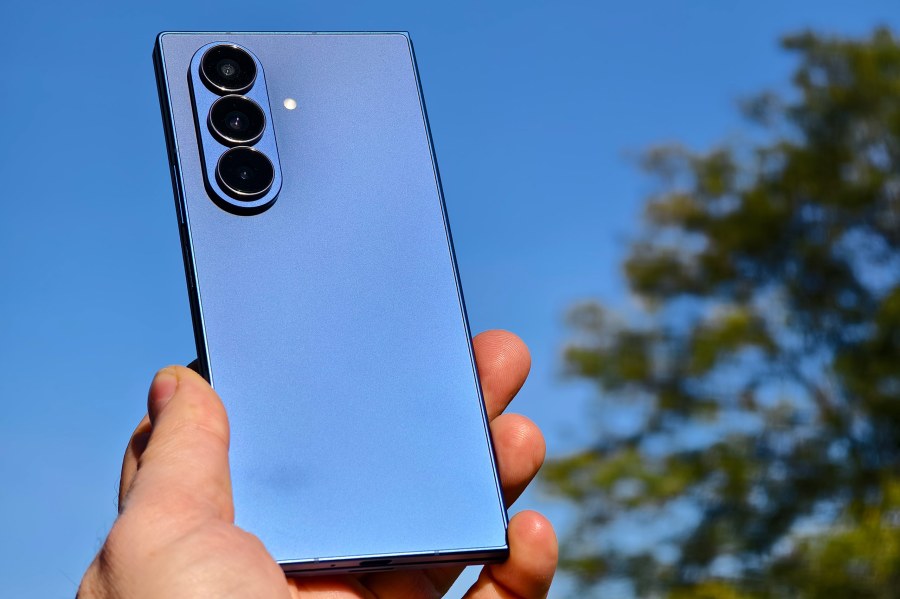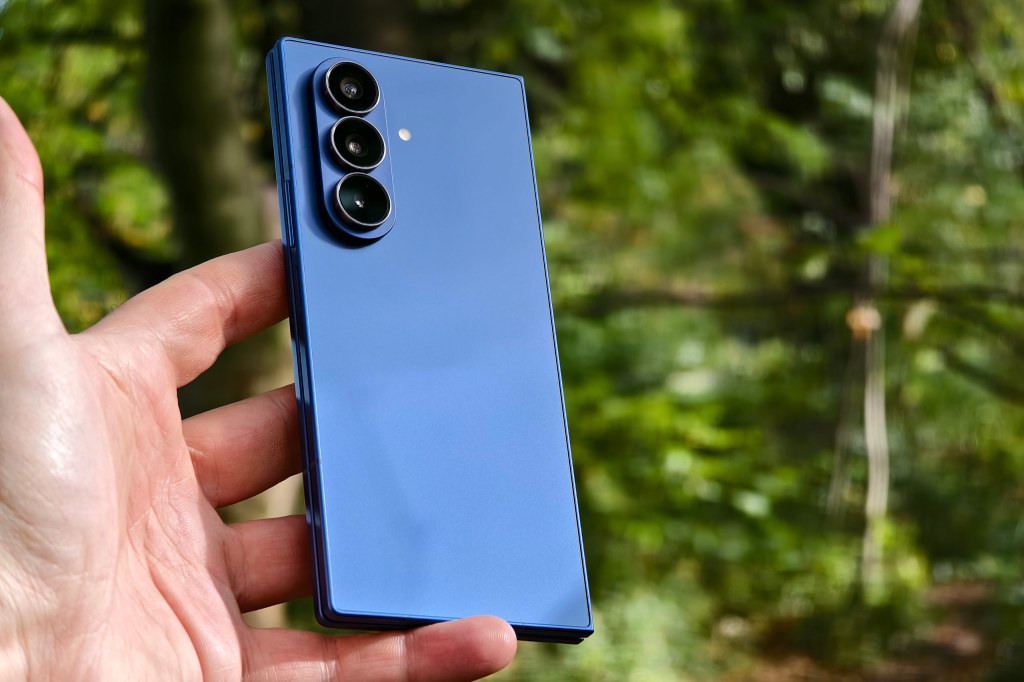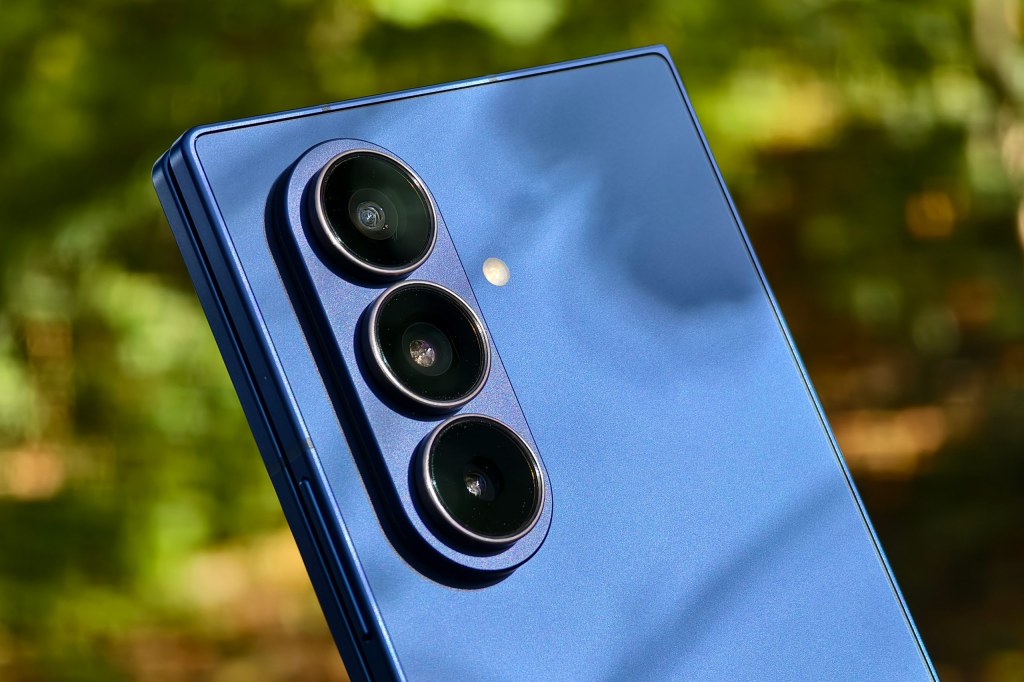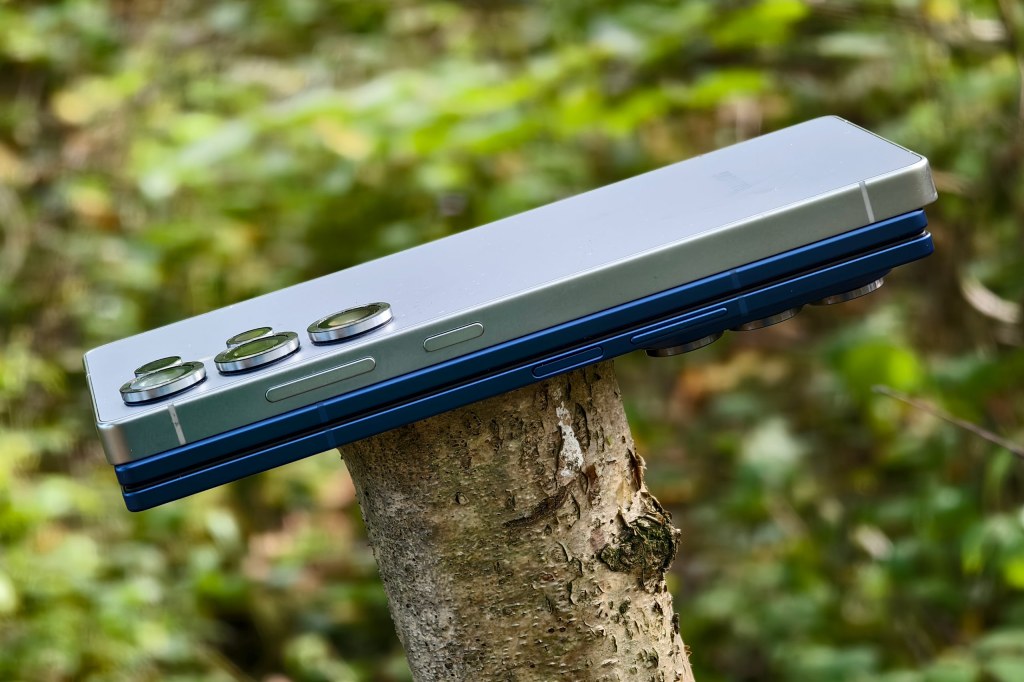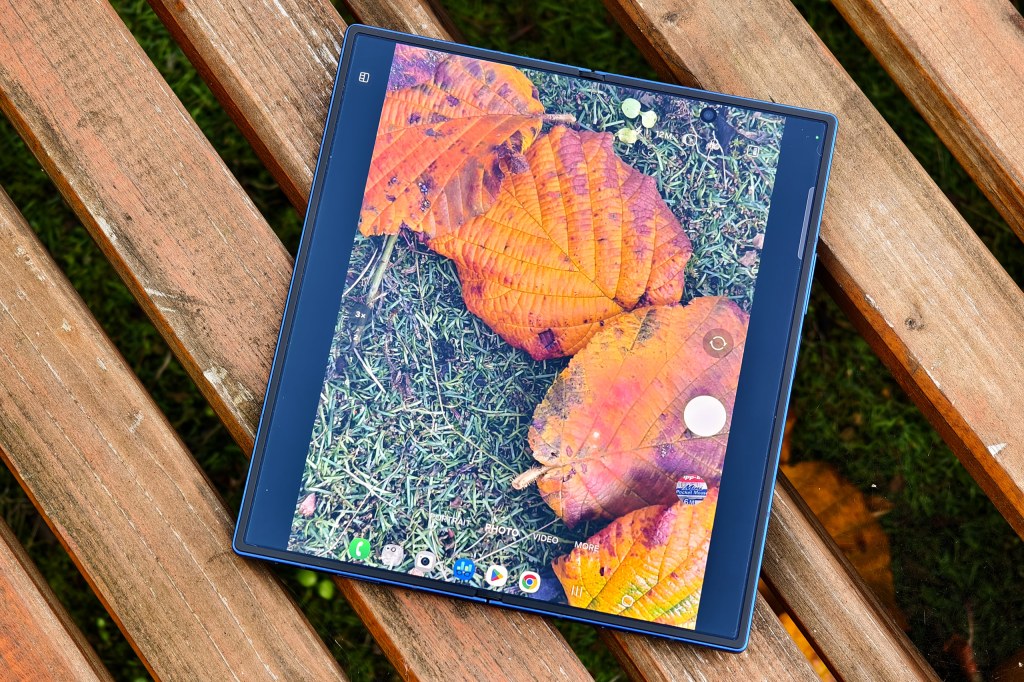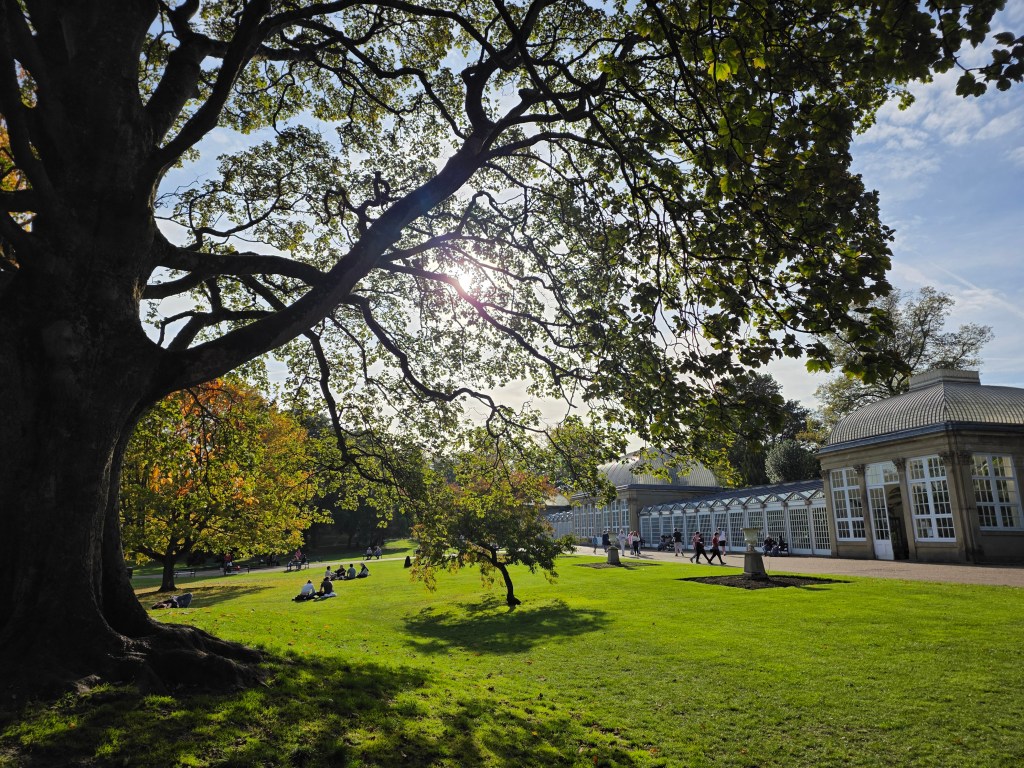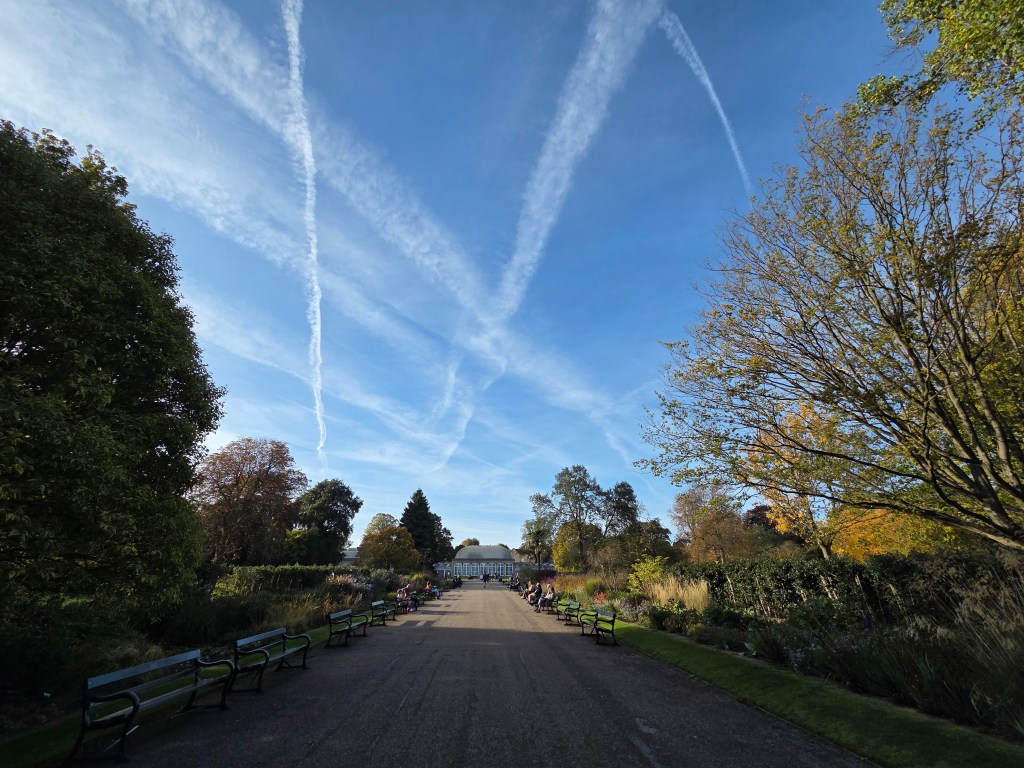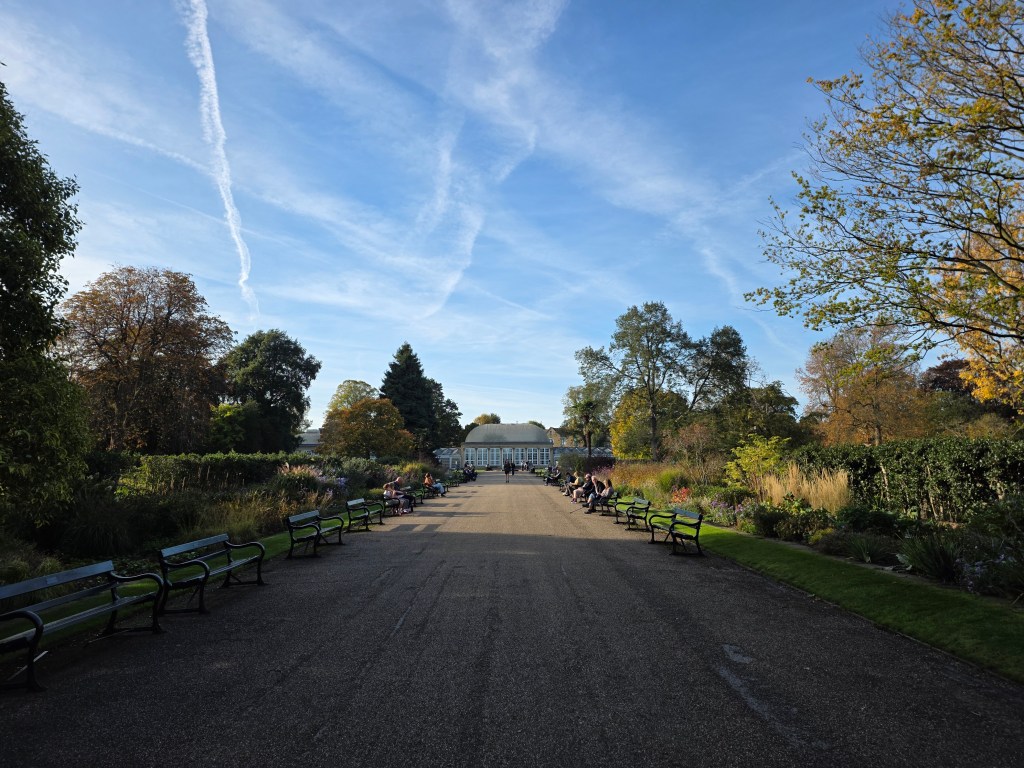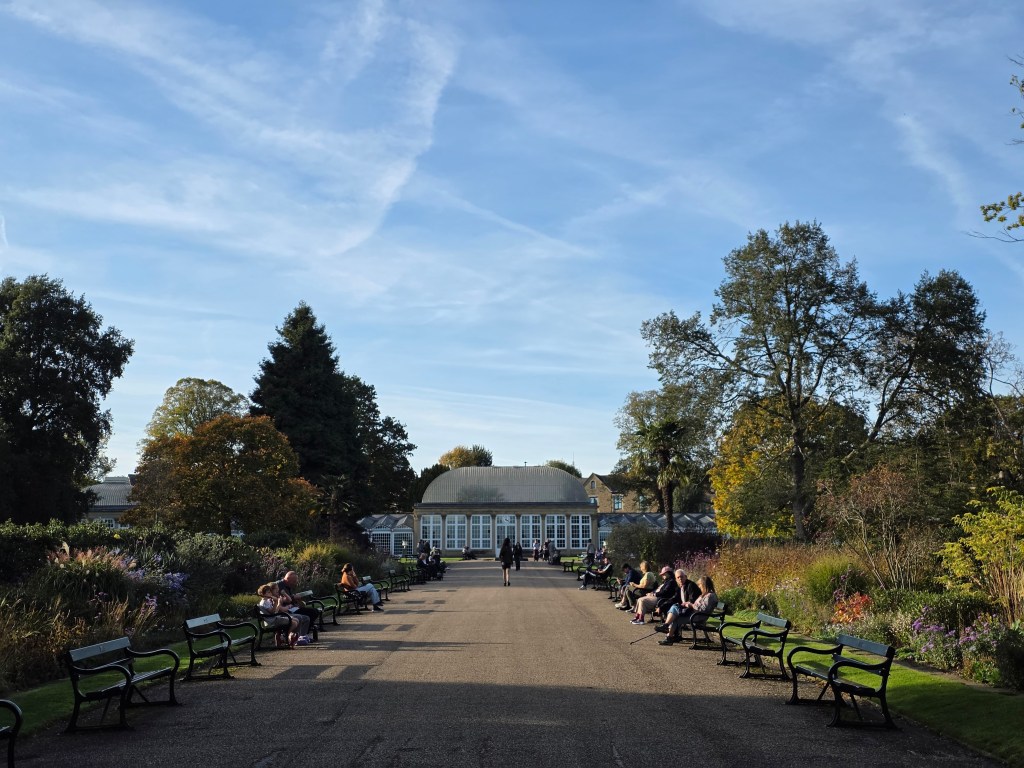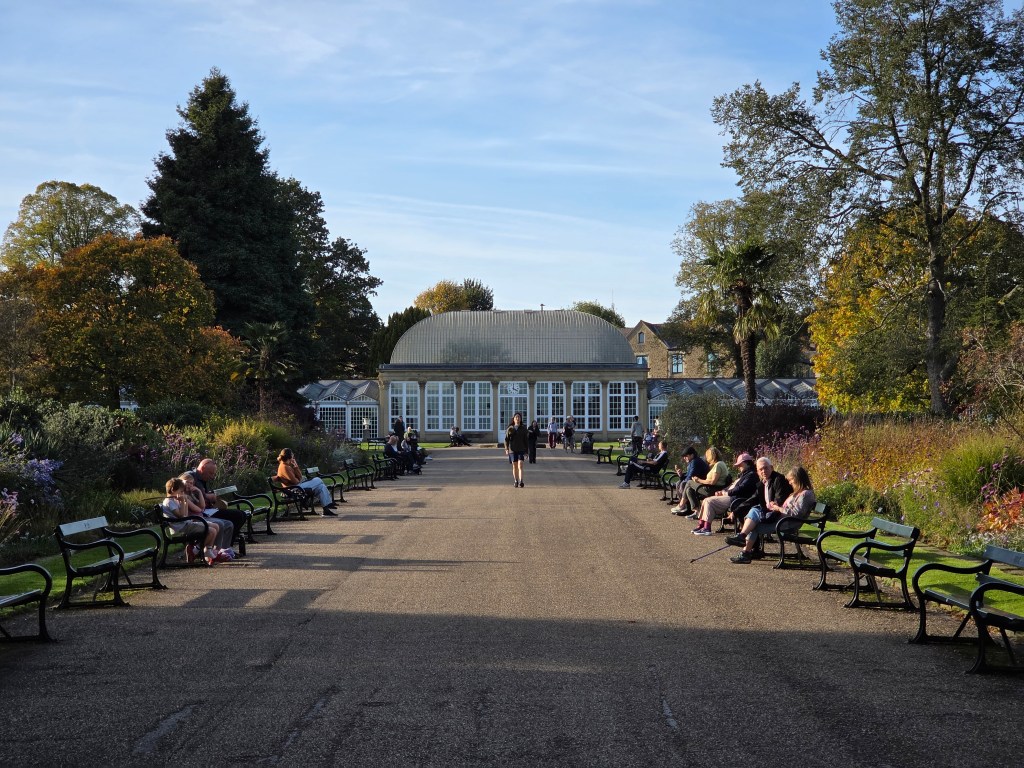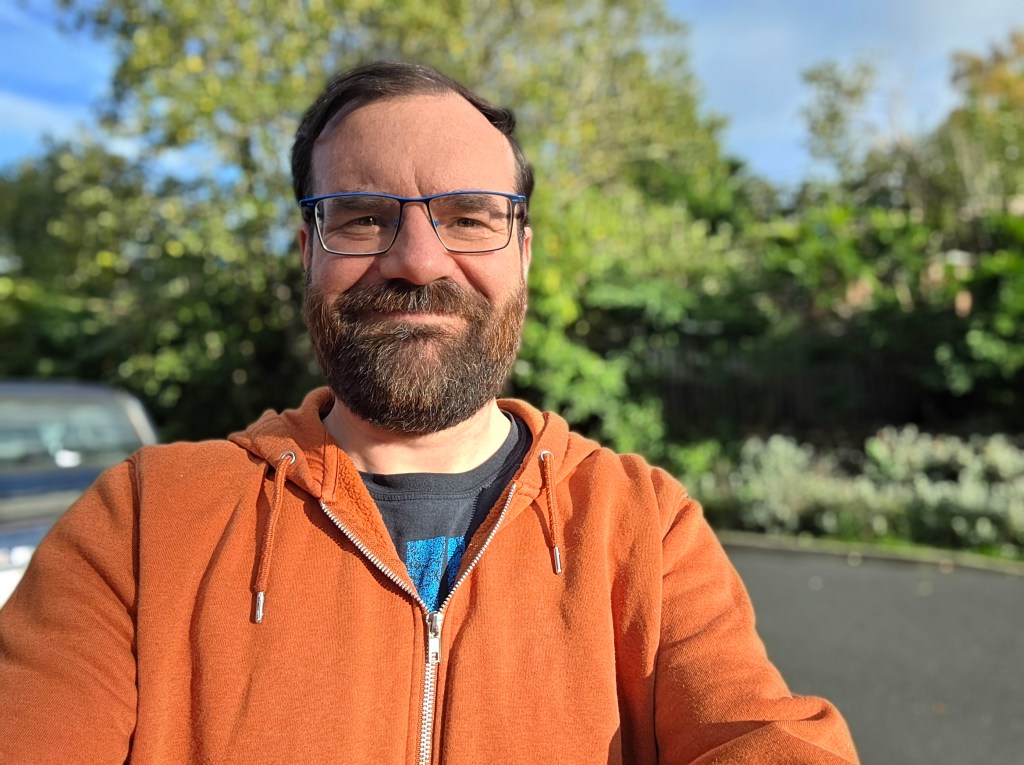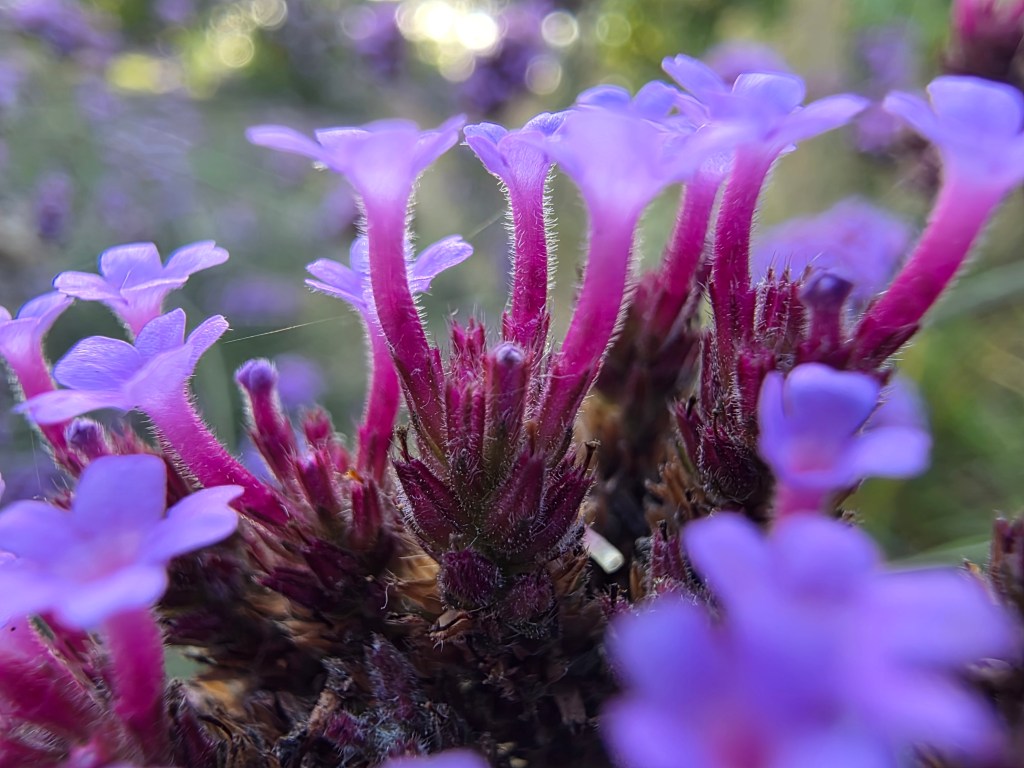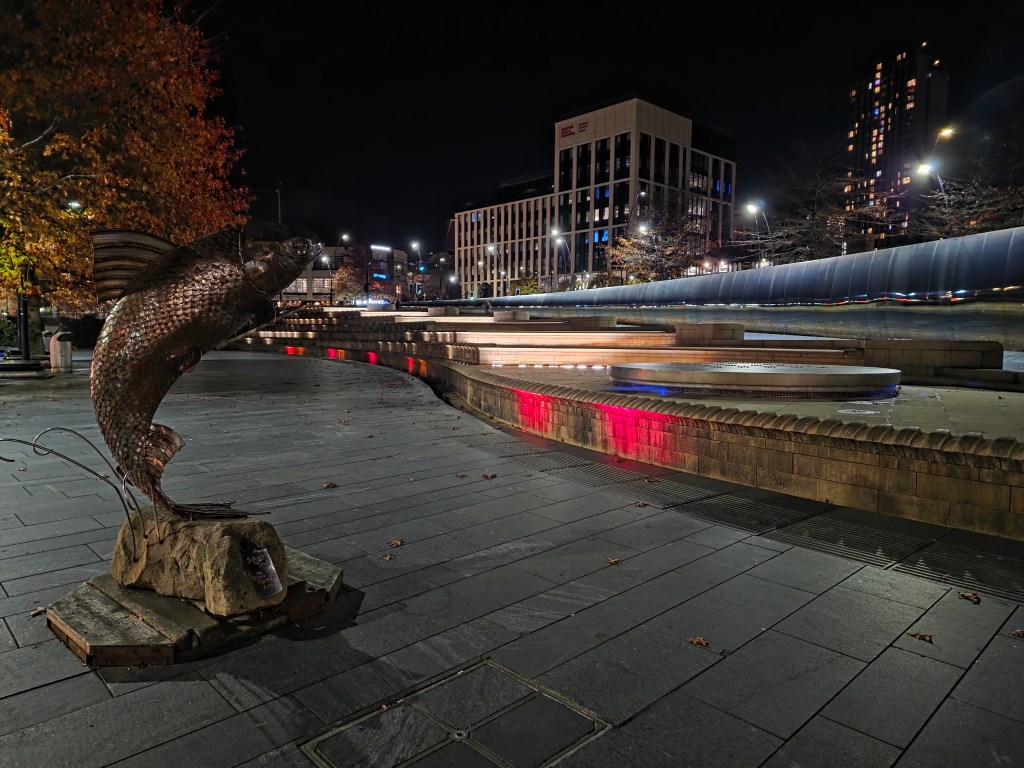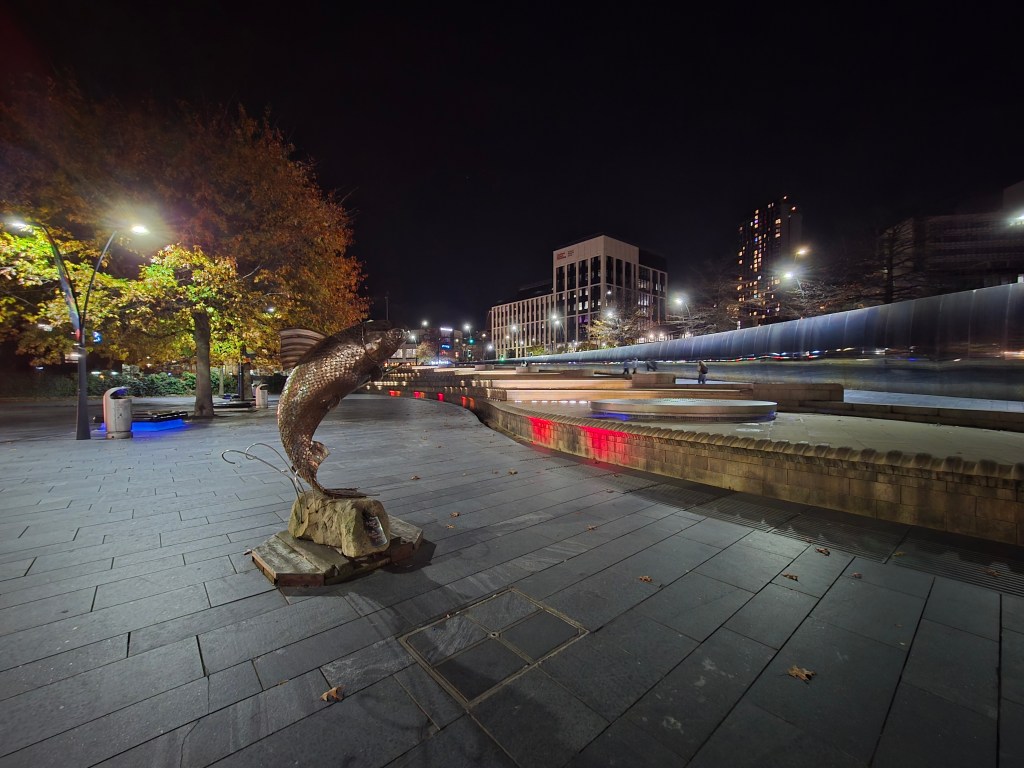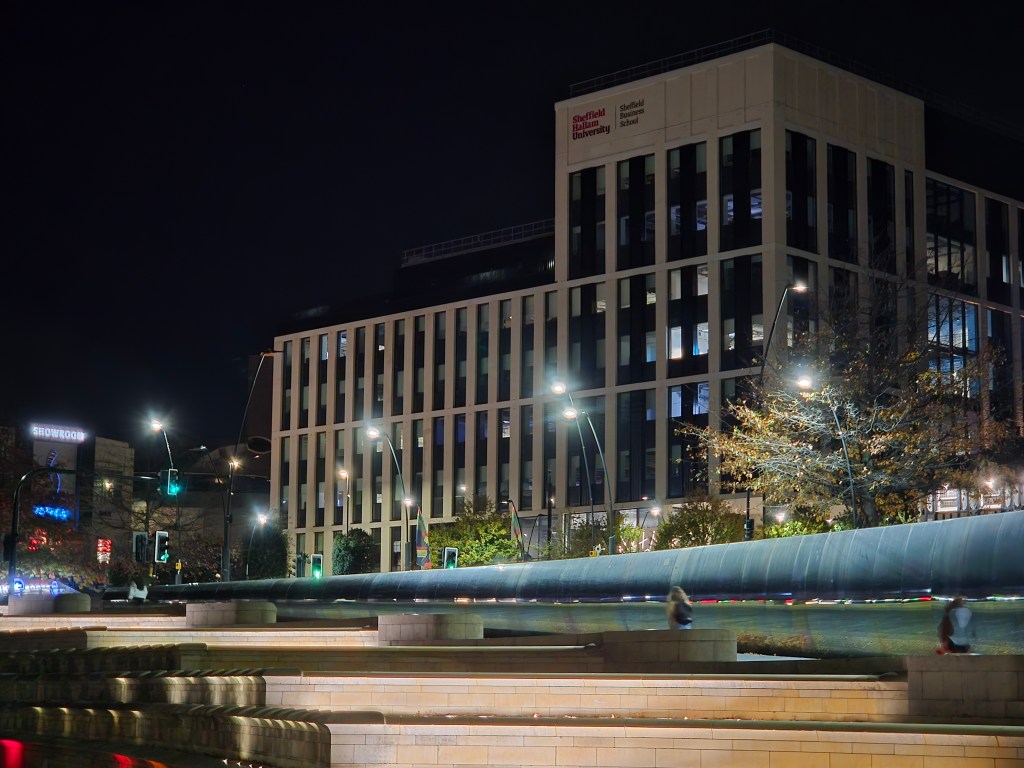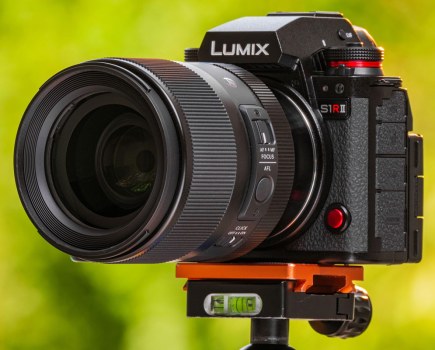Amateur Photographer verdict
Previous folding phones have left me feeling there’s been too much of a compromise, but that’s all changed now with the Z Fold7, offering a great camera setup and an ultra slim folding body.- 200MP main camera
- Amazing 8inch screen
- Feels thinner/smaller than an S24/S25 Ultra when folded
- Ultra-wide now has AF enabling macro
- Feels awkward switching to the main camera for better selfies (but worth it)
- 2x 10MP selfie cameras are best avoided
- Price is high
The Samsung Galaxy Fold7 is improved in all the ways that matter, with improved cameras, screens, design, and more, but does it do enough to make it onto the list of the best camera phones for photography? I find out. Folding phones started out a little bit clunky, a little bit large, but with worse battery life, and worse camera setups than flagship phones from the main brands, Samsung included, but perhaps with the Fold7 we’ve finally got a folding phone from Samsung that bucks their own trend?
At a glance
- 200MP f/1.7 main camera, OIS
- 0.6x ultra-wide camera, with AF and Macro
- 3x telephoto camera, OIS
- 2x 10MP selfie cameras
- 8K video recording
- 8inch inner screen, 6.5inch outer screen
How I test phones
I review smartphones from the perspective of choosing a smartphone for its photography and camera performance. I look at what the Samsung Galaxy Z Fold7 offers, and the features included for photography and video, paying particular attention to the cameras on the phone, photo editing capabilities, the output from each different lens, and the features offered.
Features – What about the Fold7 cameras?
This is the seventh folding phone from Samsung, and that means three things, people keep buying them, Samsung keep making money selling them, and more importantly for us, it’s been seriously refined to give the best folding phone Samsung has ever made.
Previous folding phones have left me a little disappointed when it comes to the cameras, as it’s been clear from the specifications that they don’t offer the best cameras, when compared to flagship bar shaped phones like the Samsung Galaxy S25 Ultra, and others.
With the Fold 7 you get an upgraded triple camera system made up of:
A 200MP main camera, with an f/1.7 aperture, PDAF (phase-detection auto-focus), and optical image stabilisation (OIS), with the lens giving a 24mm equivalent, and it uses a 1/1.3inch sensor which is pretty large, and looks to be the same camera unit as seen in the Samsung Galaxy S25 Ultra.
The 12MP ultra-wide-angle camera now has AF which will allow macro focus, and this is a step up from the S25 and S25 Plus, which have an ultra-wide-angle camera that is fixed focus (making them worse for macro shots). This is also another improvement over the Fold6.
To round things off, there’s a 10MP telephoto camera with an f/2.4 aperture, a 67mm equivalent giving 3x telephoto reach, and OIS, much like the 3x telephoto cameras you find on the S25 and S25 Plus. Beyond the 3x telephoto zoom you can also use digital zoom up to 30x (for stills).
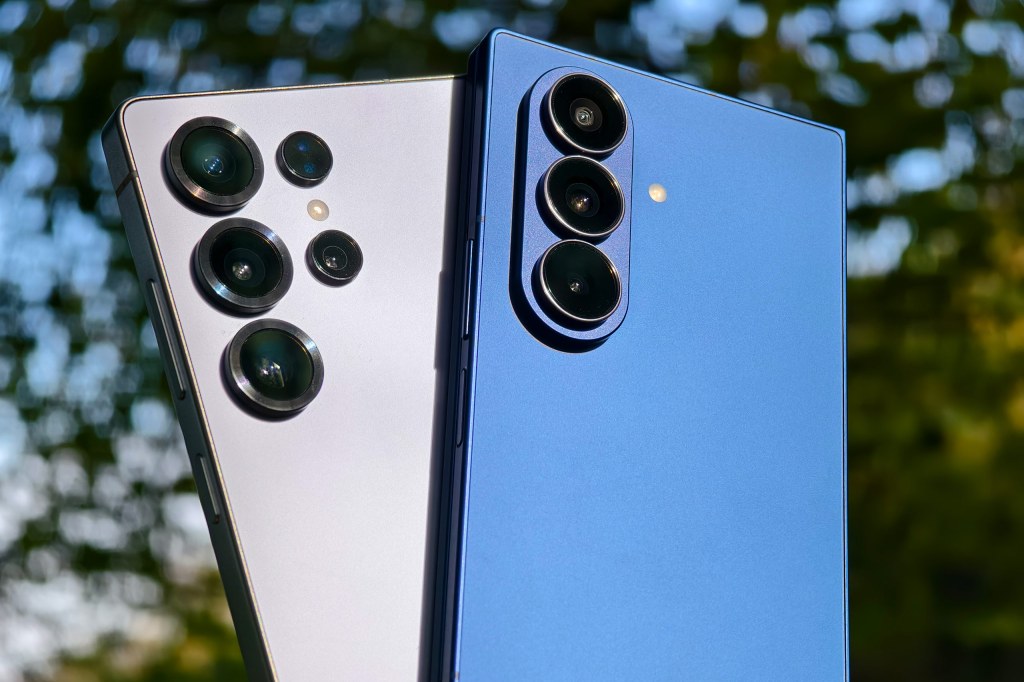
For selfie cameras there are 2x 10MP selfie cameras, one inside the inner screen, and one at the top of the smaller outer screen (also known as the cover screen). Both are 10MP units, an improvement over the shockingly low-resolution 4MP sensor on the Fold6’s inner camera.
The cover screen selfie camera has a less wide view (24mm, while the inner has an 18mm view), both with f/2.2 apertures and fixed focus. Both support 4K video recording.
If you do want better selfie’s, you can use the main cameras, but you do have to spend some time working out how to activate it in combination with the phone unfolded and activate the cover screen. It can take a while to get your head around it, but it is definitely worth it.
Handling and Design – what about the Fold7 screens?
Whilst we review phones to see how they perform for photography, the handling and design plays a huge part in how you take photos, so let’s look at what the Fold7 offers for photographers, starting with the screens. The inner folding screen is impressively large and beautiful at 8 inches when unfolded, and larger than the 7.6inch screen on the Fold6.
The outer (smaller) screen is now larger than the Fold6, with a 6.5inch screen compared to 6.3inch, but still gives you a small looking phone when folded. Unfortunately, none of the screens benefit from an anti-reflective coating, so don’t quite match the screen on the S24/S25 Ultra. The outer screen has Corning Gorilla Glass Ceramic 2 for protection, but the inner folding screen is only protected to Mohs level 1, which means even a fingernail could scratch or mark it, so you’ll need to be careful.
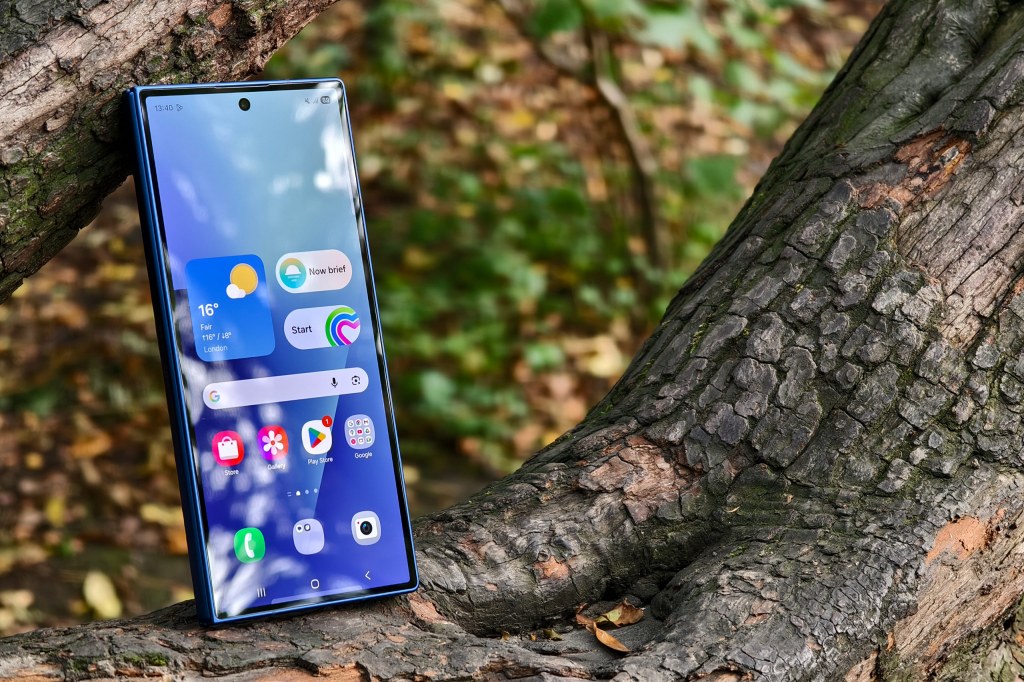
Significantly thinner unfolded, and as a result folded as well, any thinner and I doubt it would be able to have a USB socket for charging and data transfer.
Folded it’s just 8.9mm thick, which is only marginally thicker than the S24 Ultra at 8.6mm thick. In reality, if you’ve got a case on the S25 Ultra or S24 Ultra, then it’s going to feel thicker than the Fold 7 without a case.





The phone design, thanks to the folding mechanism, gives you the best of both worlds in many ways. Folded you have a relatively compact phone, that easily fits in your pocket, and unfolded you have a huge tablet sized screen, that feels a lot bigger than it sounds, thanks to the almost square ratio.
Camera app
The camera app is just like the camera app on every other Samsung phone, except for a few additional controls to change the screen use, so that you can switch between the large inner screen, and the outer screen if needed. This means there is a logical layout, and easy to access controls, with the most common modes readily available including Photo, Portrait, and Video. For additional modes, including Pro and Expert RAW, you’ll find them under More.
Double press the power button, and the camera app will automatically open, ready to take photos. If you’ve got the phone open the phone also default to the main cameras.




If you use the inner phone, the camera app changes depending on how you use it, for example, if the phone is folded slightly then one half of the screen becomes the viewfinder, and the other half is reserved for camera controls. It also lets the phone become its own little tripod.
Performance – What is the Z Fold7 image quality like?
If you’re familiar with other Samsung phones, then you’ll probably know what to expect from the Fold7. The image processing and colour reproduction of Samsung phones means you’re going to get images with good dynamic range, strong colour saturation, and quite contrasty images at times. Some people like the stronger colours on Samsung phones, whereas others prefer a more muted look.
Thanks to the Z Fold7 using the same main camera as the S25 Ultra, we get images with plenty of detail, good colour, and a pleasing level of sharpness and clarity. Noise is relatively well controlled, and images look good even when you zoom into them. On default settings, the 200MP images are pixel binned down to 12MP, and you can switch to 50MP or 200MP with the main camera.
On screen zoom options include 0.6x, 1x, 2x, and 3x. Once you select 3x, you’ll also see 10x, 20x, and 30x zoom available. You can also select any level of zoom in-between these settings. For best results it’s always best to stick to the actual cameras (0.6x, 1x, and 3x), as any other level of zoom sees a drop in image quality, and the 2x option looks quite soft, and lacking in detail. The 3x telephoto zoom gives good results, and colours match across all cameras. Lens flare can be an issue at times, but you can either use it creatively, or reframe the shot to reduce the flare.
Selfie camera(s)
For selfie’s it’s best to use the main camera, as you’ll get much better results, with significantly better colour and detail. In good light the difference is still noticeable, as shown in the gallery above, but in low-light the difference becomes even more noticeable.
The two 10MP selfie cameras don’t have auto-focus, so it makes sense that you’re going to get much better results by using the main 200MP camera (and the portrait mode). It’s quite striking how much better selfies are with the main camera, and skin tones are significantly improved, particularly when trying to take selfies in low light.
As the ultra-wide-angle camera has autofocus, this can be used for macro photography, and the phone will crop into the image to give a slightly more natural look. You can get impressively close and throw the background out of focus. Alternatively, you can use the 3x telephoto, as long as the subject is not too close then you can get some great results.
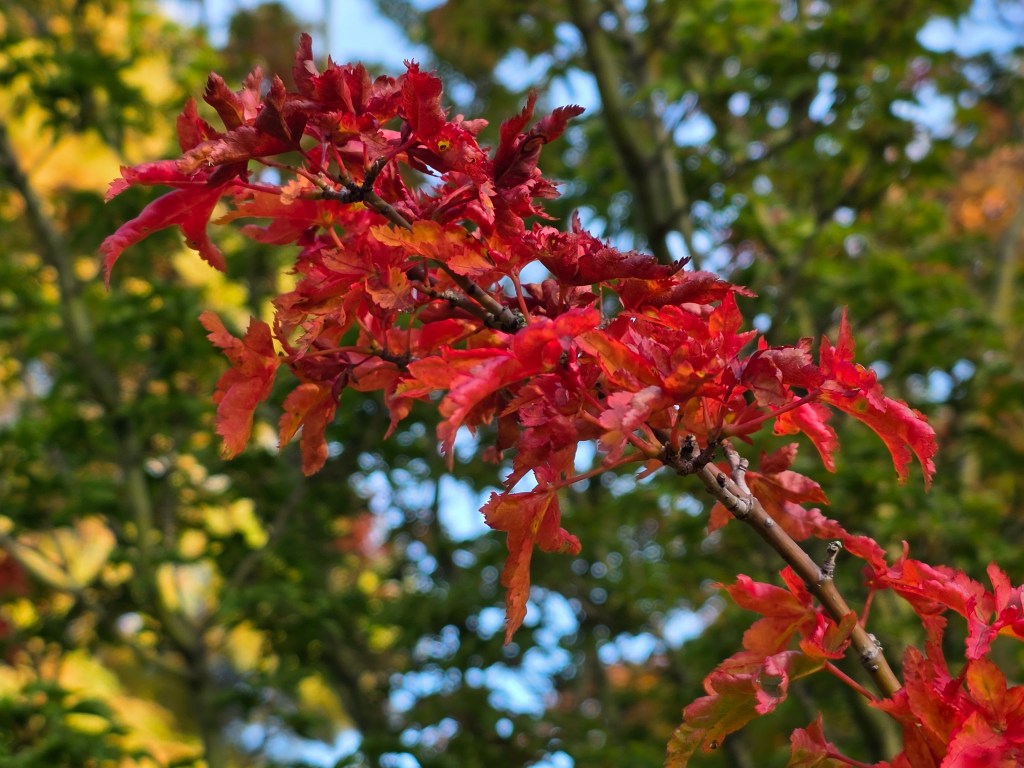
Sometimes you might try and take a close up with the 3x telephoto camera, but if the subject is too close, then the camera will automatically switch to the main camera and crop the image. Results are still good enough, but annoyingly the camera doesn’t tell you what it’s doing till after you’ve taken the photo and checked the EXIF data. This is one area where the telephoto camera could be improved, if it enabled telephoto macro shots like some other models.
Low-light / night photography
Selecting the night mode gives better results than leaving it on auto. The main camera has done a great job, considering how dark the scene was, and even the ultra-wide-angle camera has also done a good job, with good exposure and colour reproduction, although less detail. The telephoto camera struggled a bit, but results are still quite reasonable.
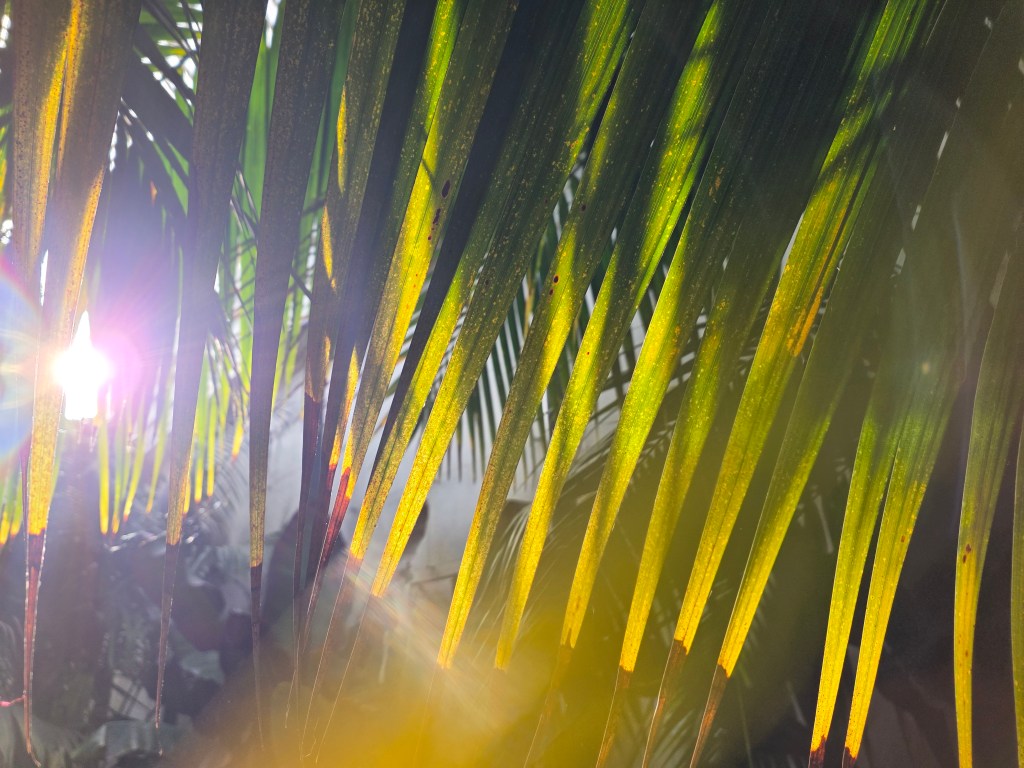
Video recording (and editing)
There are a range of video options up to 8K (30p) (main camera only), and 4K (60p) (all cameras), as well as HDR, Log, and high-bitrate options. You’ll also find a Pro Video mode available in More.
The large 8inch screen makes it great when composing photos, and pretty useful when recording video, but where it really shines in comparison to standard phones, is for video editing! The screen real estate gives a much more usable system, whereas smaller phone screens make video editing fiddly. In addition, editing and exporting video is very fast, thanks to a Snapdragon 8 Elite processor that gives excellent performance.
Value for money
The Samsung Galaxy Z Fold7 is not cheap. Priced at $1999 / £1799 (for the 256GB version), you’d be forgiven for going back to the Samsung Galaxy S25 Ultra, and thinking it’s a bargain. However, high prices are quite normal for Samsung’s folding phones. Alternatives tend to be competitively priced, if they are available in your country. The Honor Magic V5 is priced at £1699 (512GB, in the UK only), whilst the Oppo Find N5 simply isn’t available to buy in the UK or the US, so the price of this phone is entirely irrelevant. This leaves the only real competitor that is widely available, the Google Pixel 10 Pro Fold, priced at $1799 / £1749 (256GB), which offers a similar camera setup, but with smaller sensors compared to Google’s flagship 10 Pro/XL, and no on-device 8K video recording.
Verdict – should you buy the Z Fold7?
The large 8inch screen is stunning, and makes all your images look amazing, especially bright colourful images taken on sunny days. You might be disappointed when you then view them on other phones or screens, and may be overly confident that you’ve got an amazing photo. However, this is a minor quibble, as most of the time you will actually get great photos. You’ll also get 7 years of updates.
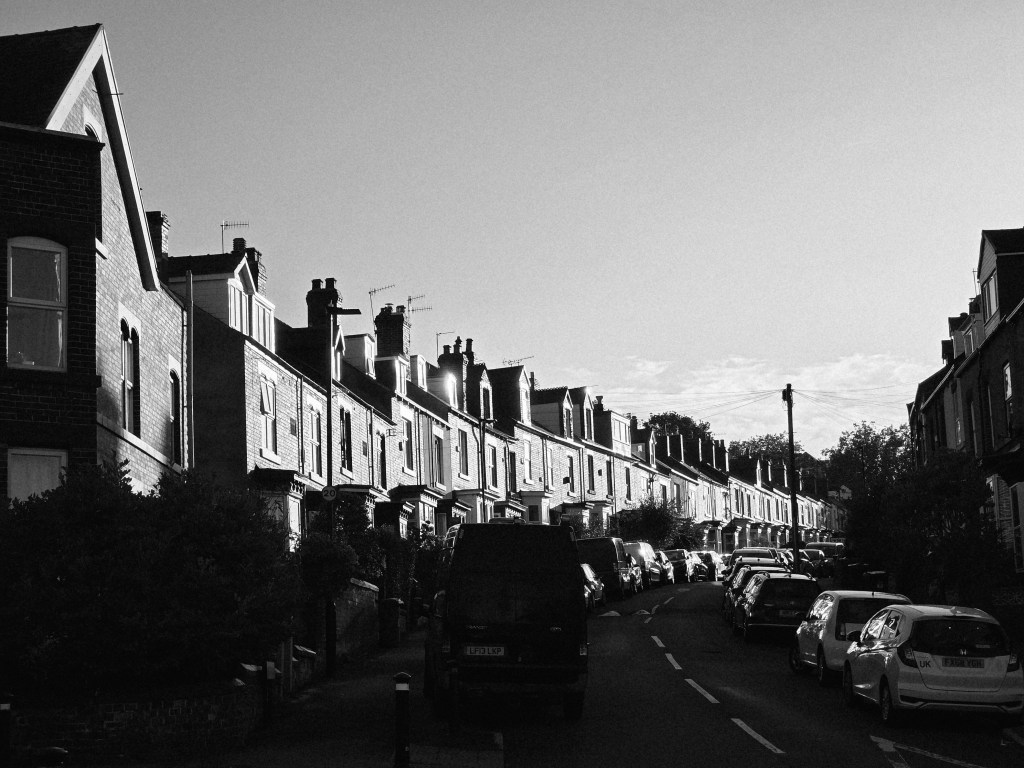
Like other Samsung phones, there were times where a faster shutter speed would have helped when taking photos, for example capturing moving squirrels, pigeons, cats, and other fast-moving animals.
The Samsung Galaxy Z Fold7 offers you a great photography experience, and an excellent all-round package of cameras, putting it on a par with other flagship (bar) phones, only slightly beaten by other phones like the S25 Ultra which has more cameras (both a 3x and 5x camera). If you prefer a larger screen, and don’t need the extra zoom, and can stomach the high price of the Z Fold7, then you should be very happy with the photography results.
If you’re someone who likes to edit photos (and video) on a phone, then the larger screen could be a godsend. However, the price could be off-putting, putting it out of reach of many people, but at least this time, the cameras put in a stellar performance. This makes the Fold7 a phone that I am putting at the top of my shopping list.
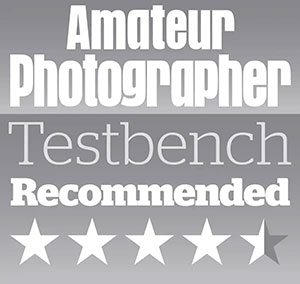
Full Specifications
| Main camera | 200MP, f/1.7, AF, OIS, 24mm (with 2x optical quality) |
| Telephoto camera | 10MP, f/2.4, 3x telephoto (67mm), AF, OIS, up to 30x digital |
| Ultra-wide camera | 12MP, f/2.2, 13mm equivalent, with PDAF (and macro) |
| Selfie cameras | 10MP, f/2.2, 18mm (inner) 10MP, f/2.2, 24mm (cover) |
| Video | 8K 30fps, 4K 120fps, Full HD 240fps |
| Screens | 8.0inch inner, QXGA+ AMOLED 2X, 120Hz, 2600nits (peak) brightness 6.5inch outer, FHD+, AMOLED 2X, Corning Gorilla Glass Ceramic 2 |
| Battery | 4400mAh, 25W wired charging, 15W wireless |
| Processor | Snapdragon 8 Elite – Geekbench 6: 3155 (single core), 9832 (multi) |
| Storage | 12GB RAM / 256GB/512GB or 12/16GB RAM / 1TB storage |
| Dimensions | 158.4 x 143.2 x 4.2mm unfolded 158.4 x 72.8 x 8.9mm folded |
| Weight | 215g |

